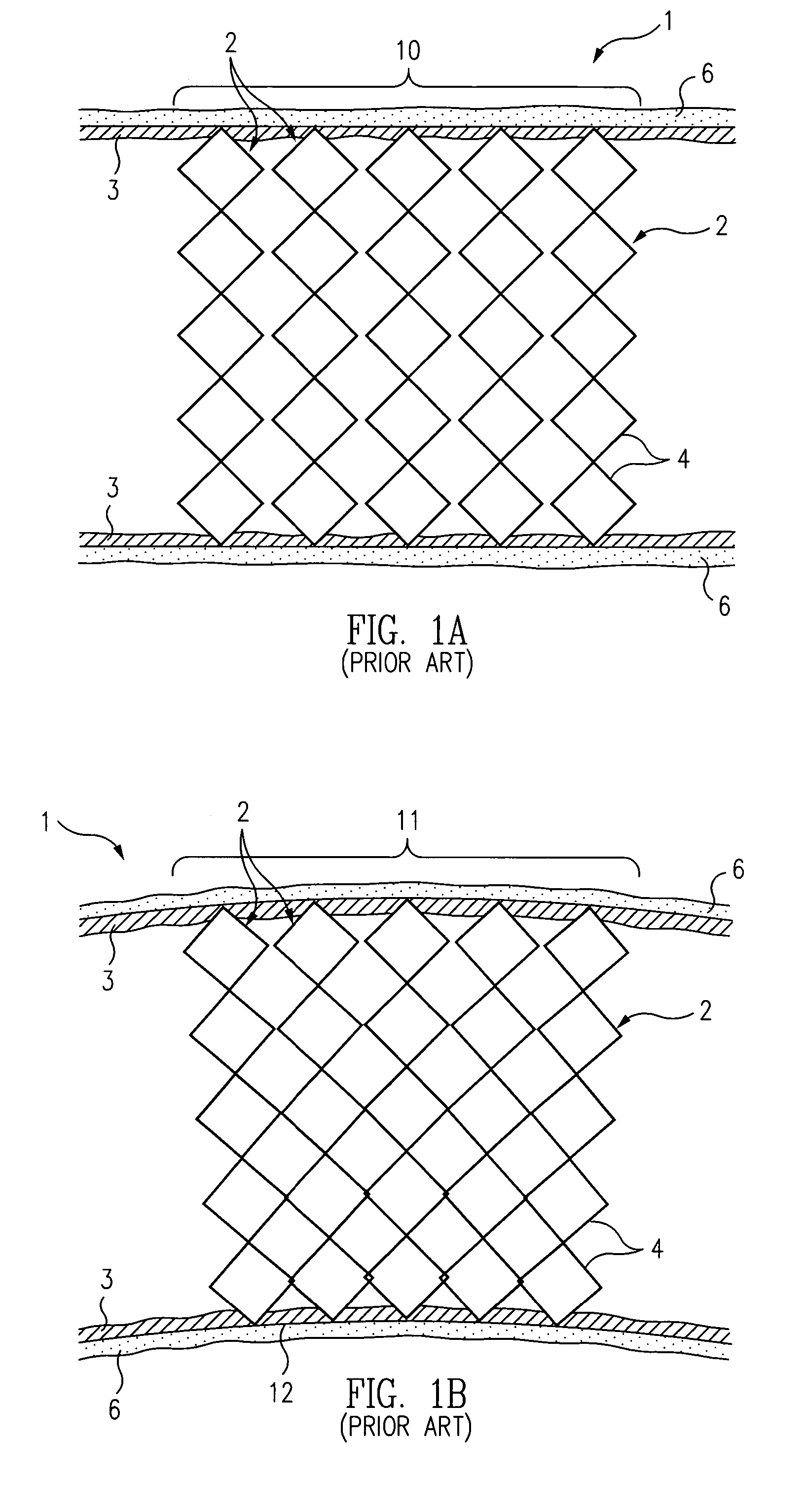Stent graft tapered spring
a stent and spring technology, applied in the field of endoluminal stent grafts, can solve the problems of limited use restricted and significant axial bending and flexing of conventional stent grafts, and achieve the effect of avoiding restriction of flow through the body lumen
- Summary
- Abstract
- Description
- Claims
- Application Information
AI Technical Summary
Benefits of technology
Problems solved by technology
Method used
Image
Examples
Embodiment Construction
[0023]Stent graft 100 (FIG. 2A) includes a plurality of spaced apart tapered stent springs 102 coupled to a cylindrical shape stent graft material 103. A tortuous body lumen, such as an artery system 106, in which stent graft 100 is deployed, includes a curved segment, e.g., a thoracoabdominal aortic arch 107, which is diseased or damaged and which requires endoluminal prosthetic support. Thus, stent graft 100 is percutaneously inserted into artery system 106, transported transluminally to aortic arch 107, and deployed to support aortic arch 107.
[0024]As shown, in one embodiment, stent graft material 103 may define one or more perimeter openings 105, (fenstrations), that allow fluid flow through perimeter openings 105, out of stent graft 100, into other segments (not shown) of artery system 106.
[0025]Tapered stent springs 102 provide axial flexibility to stent graft 100 in at least one direction. Accordingly, stent graft 100 easily conforms to the curved shape of aortic arch 107 of ...
PUM
 Login to View More
Login to View More Abstract
Description
Claims
Application Information
 Login to View More
Login to View More - R&D
- Intellectual Property
- Life Sciences
- Materials
- Tech Scout
- Unparalleled Data Quality
- Higher Quality Content
- 60% Fewer Hallucinations
Browse by: Latest US Patents, China's latest patents, Technical Efficacy Thesaurus, Application Domain, Technology Topic, Popular Technical Reports.
© 2025 PatSnap. All rights reserved.Legal|Privacy policy|Modern Slavery Act Transparency Statement|Sitemap|About US| Contact US: help@patsnap.com



